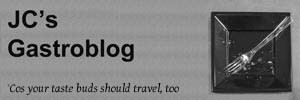I became very fond of this dish during a trip to Sri Lanka, where they often seem to serve it with a Chicken Satay skewer.
Nasi Goreng is apparently Indonesian for Fried Rice and to get an authentic flavour said rice should be fried in Nasi Goreng Paste. Kecap manis must also be included.
The basis for this recipe included shredded chicken but not prawns, though they seemed to be included in Sri Lanka. Since I am fond of the mixture, my version includes prawns too. It is traditionally served topped with fried eggs.
Planning
| serves: | 4 |
| preparation time: | 15 mins |
| cooking time: | 30 mins |
Ingredients
- vegetable oil
- 6 banana shallots, halved & sliced crosswise
- 2 chicken breasts, skinned
- 1 qty Nasi Goreng Paste
- 2x250g pouches pre-cooked basmati rice
- 2 eggs, beaten
- 2 tbs kecap manis
- 1 tbs Thai fish sauce
- juice 1 lime
- fresh lime, quartered to serve
- 250g cooked small prawns
- 2 spring onions, shredded to serve
- ½ cucumber, sliced to serve
- 4 tomatoes, sliced to serve
- salt & pepper
Method
Begin by frying the sliced shallots in vegetable oil until brown and crispy. Drain these on kitchen towel in a bowl before setting them aside and adding to the “to serve” ingredients.
Add more oil to the onion oil if necessary. Cut the chicken breasts into chunks and fry these in the vegetable oil until well browned and cooked through. Put the chicken breasts onto a clean plate and season with salt and pepper. Once cool, shred or chop them into pieces.
Reduce the heat to low and add another tablespoon of oil to the frying pan. Add the Nasi Goreng Paste and fry gently for 10 minutes. Add the rice, suitably massaged and separated into grains. Increase the heat a little and cook the rice for 3 minutes or so, stirring it and coating it with the paste. Push the rice up the sides of the pan and pour the beaten eggs into the centre of the pan. As soon as the egg has set, break it up and stir it through the rice.
Add the kecap manis, fish sauce, lime juice, shredded chicken, prawns and a little seasoning. (Be careful with the salt because you have the fish sauce already.) Cook for a few minutes until piping hot. Cover it to keep hot for a few minutes.
Fry the four separate eggs. Divide the Nasi Goreng across four plates, scattering spring onions and crispy shallots on the top of each. Now top each serving with a fried egg.
Serve with the sliced cucumber and tomatoes arranged neatly beside the Nasi Goreng.
